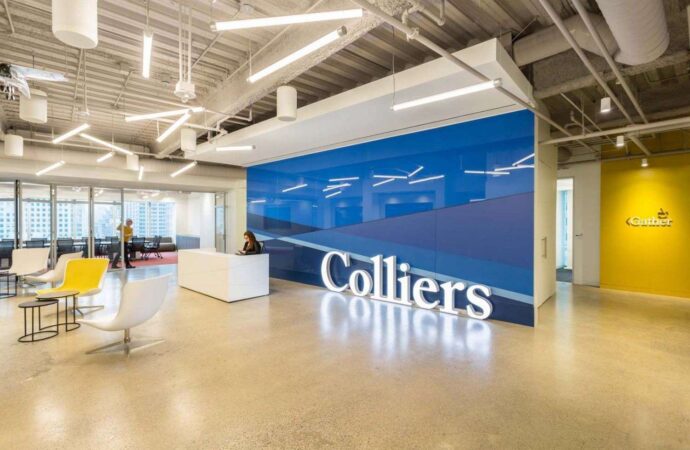Discover strategic insights from Colliers’ latest report, “Expert Insights | Asia Pacific Office Markets April 2024,” highlighting six key priorities for achieving significant cost savings in office real estate.
In an era marked by unprecedented inflation, fierce competition for talent, and the rising pressures of digitalisation and climate action, business leaders are grappling with optimising resources, maximising savings, and driving growth. Amid this complex landscape, the office remains the epicentre of work culture, even as workforce flexibility increases.
In Asia Pacific, a strong pull to the office drives higher occupancy rates than other global markets, contributing to upward pressure on regional office rentals.
This article draws directly from Colliers’ latest report, “Expert Insights | Asia Pacific Office Markets April 2024,” and highlights six key priorities for achieving significant cost savings in office real estate. Discover strategic insights and actionable guidance to help business leaders unlock tangible savings and drive growth in 2024 and beyond.
Prioritising Cost Savings in Office Real Estate
01 – Align Office Strategy with Business Goals
Linking office strategy to an organisation’s unique business goals is essential for identifying opportunities for cost reduction. Critical decisions, such as owning versus leasing, should align with location objectives and the expected duration of office needs.
Collaborating with large landlords and analysing their debt positions and credit ratings can give businesses valuable negotiation leverage.
02 – Portfolio Strategy
Exploring consolidation opportunities, such as reimagining office campuses or adopting hubs, can be a game changer for cost efficiencies. Monetising non-core assets, right-sizing, and repurposing offices to match new work models are crucial steps in thriving in today’s dynamic environment.
In hybrid work models, analysing occupancy and optimising space utilisation, leveraging long-term labour-cost arbitrage opportunities, and utilising government incentives are central to reducing real estate costs.
Additionally, relocating to markets with competitive talent availability and affordability while ensuring ESG compliance can offer significant advantages.
03 – Maximise Lease Negotiations Leverage
Understanding market cycles and timing is vital to capitalising on favourable conditions. Businesses can save on rent by identifying areas with above-market rents or relocating to lower-cost markets.
Disposing excess space through subleasing or exercising termination or contraction options and considering shorter-term and coworking options can significantly reduce costs and offer the flexibility needed to adapt to evolving business needs. Renegotiating leases and contracts can further drive cost savings.
04 – Data-Driven Space Utilisation
Leveraging technology to automate routine tasks, track space usage, and enhance operational efficiency can result in substantial cost savings and improved corporate office real estate performance. Occupancy sensors and space management software efficiently track occupancy rates, desk usage, and meeting room usage metrics.
Embracing technology solutions and automation tools streamlines office operations, improves efficiency, and reduces administrative overheads. Investing in intelligent building technologies, digital workplace platforms, and facility management software optimises facility management, space planning, maintenance, and tenant services.
05 – Prioritise Energy-Efficient Systems and Upgrades
Implementing energy-efficient lighting, HVAC systems, and building automation systems can significantly reduce utility costs while enhancing office spaces’ overall environmental impact.
Prioritising sustainability initiatives and green building practices leads to long-term cost savings and improves office buildings’ environmental performance.
06 – Drive Employee Engagement and Satisfaction
Creating a positive work environment drives employee engagement, satisfaction, and productivity. Happy and engaged employees are more likely to use office space efficiently and contribute to cost-saving initiatives.
While cost concerns increasingly influence decision-making processes, occupiers in the Asia Pacific are still willing to pay higher rentals for better-quality offices and amenity-rich locations to attract talent. However, reduced space requirements help mitigate the overall cost impact.
Bottom Line
The Asia Pacific region is benefiting from more cost-conscious occupiers globally, with significant uptake from Global Capability Centres (GCCs), particularly in markets like India, where GCCs are expected to contribute over 40% of total office leasing in the next 1-2 years. As a dominant source and destination for global capital across asset classes, including offices, the region remains a crucial player in the global real estate landscape.
By aligning office strategies with business goals, leveraging technology, and prioritising sustainability and employee engagement, businesses can unlock tangible savings and drive growth in 2024 and beyond.























